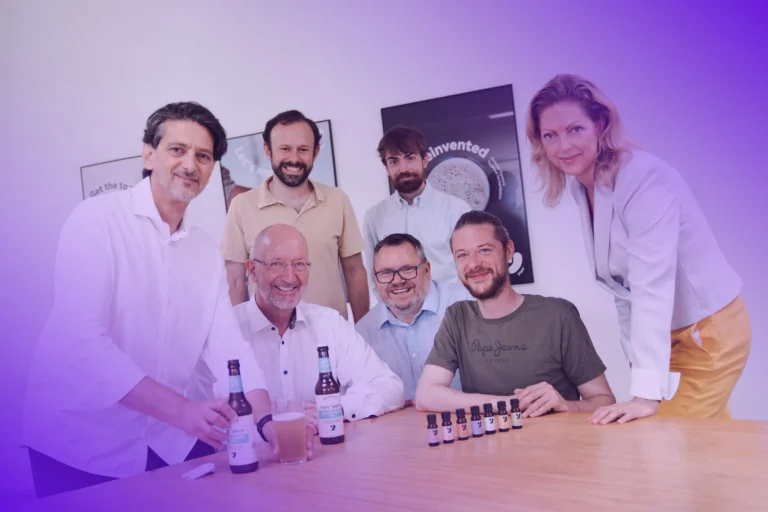

How to win over Europe’s meat lovers: new reports reveal what consumers really think of sustainable protein
For Europe’s alternative protein sector, the gap between interest and adoption remains stubbornly wide. While sustainable meat alternatives promise solutions to animal welfare, climate, and food security concerns, many consumers still hesitate to put them on their plates.
Two new reports from the EIT Food Consumer Observatory aim to close that gap. Together, More than Meat: Unpacking Cultural Perceptions of Meat and Sustainable Alternatives in Europe and Reimagining Protein: Consumer Perceptions of Cultivated Meat provide a roadmap for how the food industry can reposition plant-based and cultivated meat to resonate more deeply with European consumers.
Drawing on cultural anthropology, semiotics, and qualitative research, the reports show that meat is far more than a dietary staple: it carries deep emotional and cultural meaning, shaping identity, community, and tradition. Any attempt to replace or reform it, therefore, must go beyond the scientific and environmental arguments – and tap into the symbolic, sensory, and social values meat represents.
According to the More than Meat report, meat holds enduring power in European culture. Through a semiotic analysis of advertising, packaging, and consumer-generated imagery across 17 countries, the study identified three dominant 'families' of meat meaning: Mighty Meat, linked to strength and abundance; Commoditised Meat, associated with convenience and affordability; and Mindful Meat, which reflects ethical and community-based consumption.

The latter is gaining ground as consumers grapple with concerns over animal welfare, climate impact, and overprocessing. But the transition is uneven across Europe. While Northern and Western countries are moving faster toward alternatives, Southern and Eastern Europe remain more meat-conservative.
Importantly, the report found that plant-based and cultivated alternatives are often perceived as artificial or detached from these positive associations. Without the emotional cues of tradition, celebration or enjoyment, they risk being seen as sterile solutions to problems – not desirable foods in their own right.
In Reimagining Protein, researchers dug into how European consumers view cultivated meat – and what it would take to build trust. Based on qualitative data from the Citizen Participation Forum and the EIT Food TrustTracker, the report segments consumers into three broad groups: Preference for Plant-Based, Best of Both, and Majority Meat.
Each group responds differently to cultivated meat. Plant-based consumers are unlikely to eat it themselves but may support its production for others. The Best of Both segment – health-conscious flexitarians – are most open to trying it, particularly if it aligns with their values on sustainability and animal welfare. Majority Meat consumers are the hardest to convert. They prioritize taste, tradition, and familiarity, and often view cultivated meat as unnatural or overly processed.
Across all groups, key concerns include unfamiliarity, taste, health impacts, and a general skepticism that the technology is progressing. “Momentum in interest for cultivated meat seems to be declining,” the report notes, in part due to reduced media visibility and increased exposure to negative messaging.
One major finding is that trust in the food system is fragmented. Consumers generally trust scientists, who are seen as caring and competent, but are wary of manufacturers and skeptical of government oversight. As one respondent put it: “Scientists are seen as caring for the public and competent, manufacturers as competent but not caring, while authorities are seen as caring but not competent enough.”
Both reports converge on a key recommendation: cultivated and plant-based meat must be repositioned through culturally resonant storytelling.
For cultivated meat, this means moving beyond high-tech imagery and claims. Consumers respond better to what the researchers call 'soft science' – human, transparent, and emotionally grounded narratives. Showing real people behind the innovation, using calming visuals and warm design elements, and emphasizing taste and enjoyment can go a long way.
-1.jpg)
As one consumer from Belgium noted: “The images showcase the process and product with a focus on sustainability, innovation, and care for animal welfare. The language is accessible and aspirational, making complex science feel relatable and inspiring.”
Reclaiming cultivated meat as real meat is another priority. This means positioning it not as a substitute, but as a continuation of meat tradition – one that’s healthier for animals, people, and the planet. Messaging should clearly state: this is real meat, just made differently.
The reports also evaluated emerging go-to-market strategies. One is hybrid meat – products combining plant-based protein with cultivated animal cells or fat. While appealing in theory, the reception was mixed.
Rather than combining the best of both worlds, hybrid meat was sometimes seen as the worst of both: neither fully plant-based nor fully meat. “What benefits adding the animal fat has?” asked one Danish respondent. “Is it just for the good taste?”
Another strategy – launching cultivated meat as a premium or exotic offering – may have niche appeal but risks alienating price-sensitive or sustainability-focused consumers. “Luxury cultivated meat is seen as an unnecessary product that no-one is asking for,” the study found.
Ultimately, both strategies face the same hurdle: cultivated meat is not yet associated with quality or flavor. “Consumers do not associate cultivated meat with high quality and great flavor,” said one participant. “If I want to try any kind of luxury meat, I would go to buy a standard one, not the artificial one.”
To move forward, the reports call for greater transparency, more relatable communication, and stronger collaboration across the food system. Companies must show they care about public health, not just profit. Governments must demonstrate competence and agility in regulating novel foods. And startups must work together to counter misinformation.
Education is key. Many consumers still don’t understand how cultivated meat is made, or how it compares environmentally to conventional meat. Clear, simple explanations – paired with appetizing visuals and familiar meal contexts – will be essential to building confidence.
The reports also emphasize the need to anchor cultivated meat in a sense of real-world community. Instead of highlighting test tubes and lab coats, show shared meals, real kitchens, and trusted messengers. Over time, the focus can shift to the bigger-picture benefits: food security, ethical progress, and restoring balance with nature.
As the reports conclude, “Future success hinges not only on science or sustainability, but on emotional resonance, cultural fluency, and narrative authenticity.”
If you have any questions or would like to get in touch with us, please email info@futureofproteinproduction.com


-p-800.jpg)



